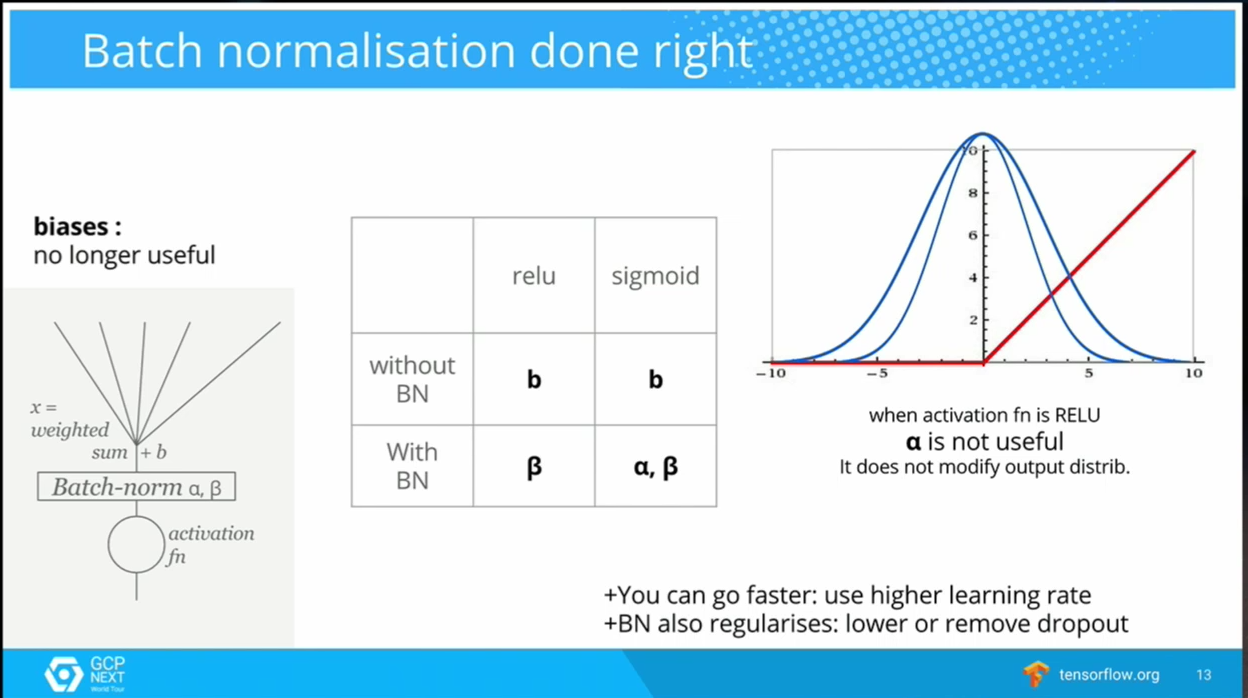Notes on using/applying machine learning
-
Images (DL)
- Center (subtract the mean image or per channel mean)
- Not common to dp PCA, normalizing etc.
-
A simple way to deal with outliers python
- Numerical: log, log(1+x), normalization, binarization
- Categorical: one-hot encode, TF-IDF(text), weight of evidence
- Timeseries: stats, MFCC(audio), FFT
- Numerical/Timeseries to categorical - RF/GBM
- Squared loss minimizes expectation. Pick it when learning expected return on a stock.
- Logistic loss minimizes probability. Pick it when learning probability of click on advertisement.
- Hinge loss minimizes the 0,1 / yes-no question. Pick it when you want a hard prediction.
- Quantile loss minimizes the median. Pick it when you want to predict house prices.
- Ensembling multiple loss functions
Adapted from: https://github.com/JohnLangford/vowpal_wabbit/wiki/Loss-functions
- If you are usin ReLu, it is good practice to
- initialize them with slightly positive bias to avoid dead neurons (small networks).
- Xavier-He initialization
W = np.random.rand(fan_in, fan_out) / np.sqrt(fan_in/2)(recommended).
- To sanity check the network, start witha very small data (20 images) and no regularization and overfit the model. You should be able to see
accuracy ~= 1andloss ~= 0if everything is fine. - If we have a high learning rate, (basic) SGD has big steps and it is progressing fast. Solution: use decaying learning rate; ADAM and such.
- decay lr overtime.
- Getting some ideas: in training, start with two extreme lrs (
1e-6,1e6) and narrow it down by adjust it incremantally (binary search like) until the loss is declining in a sensible way (not staying flat, not exploding, no NaNs, exceptions etc). - Fine tuning: here
- Prefer random search over grid search.
Causes:
- Too many neurons
- Not enough data
- Bad network
To cure overfitting:
- Dropout (note: some noise may come back. Not recommended with conv nets.)
- Data augmentation(add noise to data)
Data in real world: large values, different scales, skewed, correlated
Solution:
-
Data whitening:
- Scale: center around zero
- Decorrelate: (A+B)/2, A-B (PCA etc)
- Add an additional layer and let NN do it (to determine what the clean data is)
-
Batch normalization (better option)
Note:
- with batch normalization, bete replace bias so don't use bias when batch normalizing.
- you can use higher lrate
- stop using (or do a little) dropout
- Ensambling independant models increases the accuracy ~2%
- You can also ensamble saved checkpoints of a model
- Feature extracting / fine tuning existing network: Caffe
- Cpmplex uses of pretrained models: Lassagne or Torch
- Write your own layers: Torch
- Crazy RNNs: Theano or Tensorflow
- Huge model, need parallelism: Tensorflow

